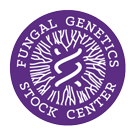Strain: Neurospora crassa
FGSC #1167
Reporting Genes: phe-1;inl
Species: crassa
Allele: UA119 89601
Alternate Strain Number: 135
Mutagen: NA
Depositor: KKJ
Linkage Group: IL;VR
Mating Type: A
Genetic Background: M
ref1: Jha 1965 Neurospora Newslett 7:15-18, https://doi.org/10.4148/1941-4765.2106
ref2: Jha 1969 Neurospora Newsl. 14:3, https://doi.org/10.4148/1941-4765.2025
Genes
